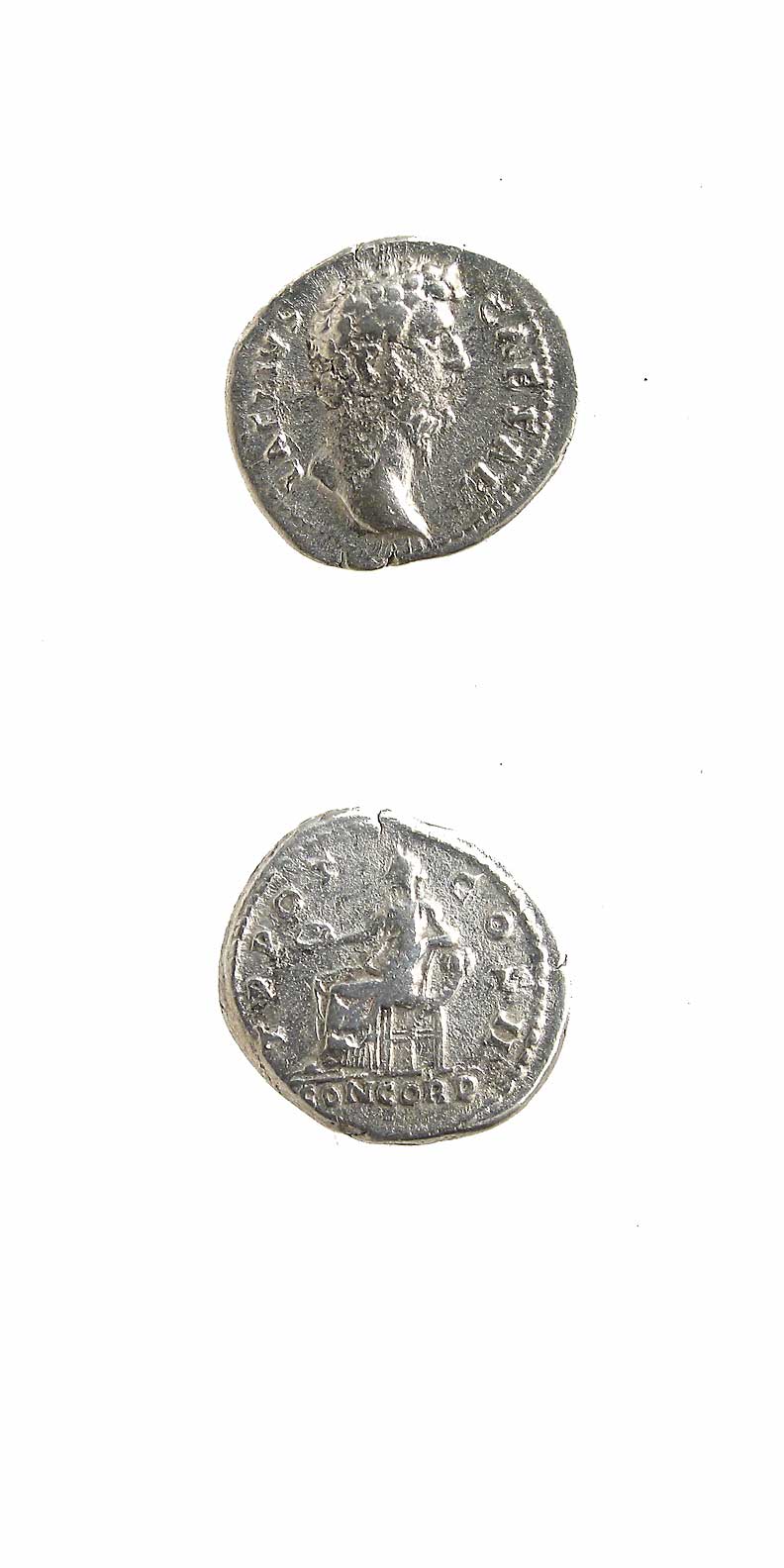Silver Denarius of Aelius, 136 CE - 138 CE
Silver
C.5977
Obverse: L AELIVS CAESAR; Bust of Aelius Facing Righ Reverse: TR POT COS II/CONCORD; Concordia Seated to the Left on a Throne, Holding a Patera and Leaning on a Cornucopia...
Obverse: L AELIVS CAESAR; Bust of Aelius Facing Righ
Reverse: TR POT COS II/CONCORD; Concordia Seated to the Left on a Throne, Holding a Patera and Leaning on a Cornucopia
Lucius Aelius Lucius Verus Caesar was a descendant of an ancient and distinguished Etruscan family. Aelius was named Consul for the year 136 A.D. That same year, he was adopted by Hadrian as his heir and designated successor. After his term as Consul, Aelius was granted the governorship over Pannonia, where he served for somewhat less than a year before returning to Rome. He died on January 1, 138 A.D.
How many hands have touched a coin in your pocket or purse? What eras and lands have the coin traversed on its journey into our possession? As we reach into our pockets to pull out some change, we rarely hesitate to think of who might have touched the coin before us, or where the coin will venture to after it leaves our hands. More than money, coins are a symbol of the state that struck them, of a specific time and location, whether contemporary currencies or artifacts of a long forgotten empire. This stunning hand-struck coin reveals an expertise of craftsmanship and intricate sculptural detail that is often lacking in contemporary machine-made currencies. This coin is a memorial to ancient Rome passed from the hands of civilization to civilization, from generation to generation that appears as vibrant today as the day it was struck.
Reverse: TR POT COS II/CONCORD; Concordia Seated to the Left on a Throne, Holding a Patera and Leaning on a Cornucopia
Lucius Aelius Lucius Verus Caesar was a descendant of an ancient and distinguished Etruscan family. Aelius was named Consul for the year 136 A.D. That same year, he was adopted by Hadrian as his heir and designated successor. After his term as Consul, Aelius was granted the governorship over Pannonia, where he served for somewhat less than a year before returning to Rome. He died on January 1, 138 A.D.
How many hands have touched a coin in your pocket or purse? What eras and lands have the coin traversed on its journey into our possession? As we reach into our pockets to pull out some change, we rarely hesitate to think of who might have touched the coin before us, or where the coin will venture to after it leaves our hands. More than money, coins are a symbol of the state that struck them, of a specific time and location, whether contemporary currencies or artifacts of a long forgotten empire. This stunning hand-struck coin reveals an expertise of craftsmanship and intricate sculptural detail that is often lacking in contemporary machine-made currencies. This coin is a memorial to ancient Rome passed from the hands of civilization to civilization, from generation to generation that appears as vibrant today as the day it was struck.



